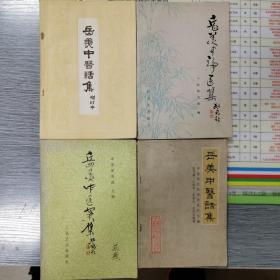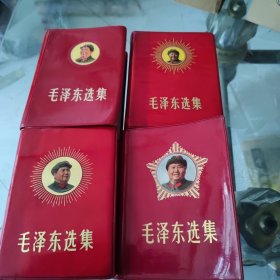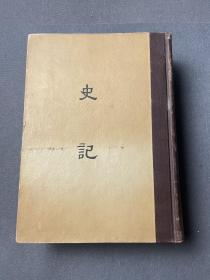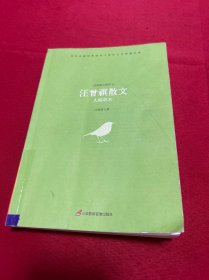
中国经济:崛起在世界的地平线(英文精装版)
正版全新
¥ 52.25 4.8折 ¥ 110 全新
库存2件
送至北京市朝阳区
运费快递 ¥13.00
作者朱民 著
出版社外文出版社
ISBN9787119116273
出版时间2019-02
装帧其他
开本16开
纸张胶版纸
定价110元
货号1543275
上书时间2025-03-24
评价127好评率 100%
- 在售商品 暂无
- 平均发货时间 16小时
- 好评率 100%
- 最新上架
商品详情
- 品相描述:全新
- 商品描述
-
【书 名】 中国经济:崛起在世界的地平线(英文精装版)
【书 号】 9787119116273
【出 版 社】 外文出版社
【作 者】 朱民 著
【出版日期】 2019-02-01
【版 次】 1
【开 本】 16开
【定 价】 110.00元
【内容简介】
In 1978 China embarked upon its journey of economic reform and opening up, and ever since its economy has exhibited unprecedented dynamism and vit.ality. In less than 40 years, China has transformed itself from an impoverished third-world country playing a minor role in the global economy into the world's second-largest economy, biggest t.rader in goods and top manufacturing powerhouse. With such awe-inspiring achievements, China's economy today is rising on the horizon, with unlimited prospects ahead.
【目录】
Preface
Chapter 1 China's Economy: Soaring Dragon and Leaping Tiger
Section I Reform and Development of the Rural Economy: A Great Experiment of 800 Million Farmers
Section II Reform and Development of the Industrial Economy: From a Centrally Planned to a Market-Driven System
Section III Reform and Development of Foreign Trade: From Isolation to World No. 1
Chapter 2 China's Financial System: A Miracle Starting from Scratch
Section I Creating a Financial System from Scratch
Section II A Flourishing Financial Market
Section III Explosive Growth of "Digital Finance" in China
Section IV China's Financial Sector "Goes Global"
Section V Experience and Outlook of China's Financial Reforms
……
Chapter 3 Bright New Lives and Social Outlook
Chapter 4 China's Responsible Key Role in the International Community
Chapter 5 China's Economy Shocks the World
Afterword
【文摘】
《中国经济:崛起在世界的地平线(英文 精装版)》:
2. From planning to separation of powers: foreign-trade system reforms 1979-1986
The reform of China's foreign-trade system was primarily aimed to change the highly centralized management system and the mandatory planning management system, delegate foreign-trading powers to lower levels, and introduce a combination of mandatory plans, guiding plans, and market regulations. Specific reform measures included:
(1) Adjusting the leadership structure: In 1979, the Chinese government established the Import and Export Administration Committee, which supervised the MFT. In Mafch 1982, realizing that the two institutions had ovedapping authority and duplicated work, the Chinese government merged them, alongside the Ministry of Economic Relations with Foreign Countries and the Foreign Investment Committee, to form the Ministry of Foreign Trade and Economic Cooperation (MFTEC). The new ministry was responsible for administering foreign trade nationwide.
(2) Breaking the monopoly of foreign-trade departments over foreign trade: The State Council permitted ministries in selected productive sectors to establish import and export corporauons special_izing in foreign trade related to their sector. In the case of the Ministry of Machinery, by June 1984, it had established 23 corporations, including the China Machinery and Equipment Import and Export Corporation and the China Agricultural Machinery United Import and Export Corporauon. The monopoly of the foreign-trade departments over foreign trade was thus broken.
(3) Expanding local rights to deal in foreign trade: In July 1979, the Chinese government introduced special policies and flexible measures for foreign-related economic activities in Guangdong and Fujian provinces. In January 1982, the CPC Central Committee released the minutes of the Conference on Foreign Trade in Nine Coastal Provinces, resolving to expand foreign-tfade fightS at the local level. The import and export of all goods, except those monopolized by the state, were to be managed at the locallevel. The state would only issue quotas for foreign-exchange earnings from exports, and all provinces were allowed to retain surplus earnings after fulfilling their quotas. This inspired strong enthusiasm for foreign trade at the local level.
(4) Defining the division of responsibility between central and local governments: Bulk imports and the import of goods with a strong monopolistic nature in the international market were to be handled by specialized foreign-trading companies affiliated with the MFTEC, and under special cifcumstances, goods for self-consumption could be imported with the approval of imports distribution corporations. Moreover, local governments could import goods, except those handled by specialized foreign-trading corporations, with their retained foreign-exchange earnings or self-raised foreign exchange.
……
为你推荐

社论选
八五品上海
¥260.00

岳美中医话集
八五品广州
¥50.00

中药成方系列五本 《全国中药成药处方集》《中药成药制剂手册》《武汉中药制用成方集》《丸散膏丹集成》《丸散膏丹方》手抄本
九品武汉
¥11800.00

毛泽东选集1-4卷全 (四本合售,详见图片,图片实拍)50 品好
八五品上海
¥328.00

高尔基集:不合时宜的思想(收录有高尔基撰写的《列宁传》)
九品潮州
¥40.00

永远的家园:土楼漫游
九品东莞
¥6.00

台湾文津出版社版 朱棣集 注《金刚经集注》(锁线胶订)2012年版
全新北京
¥66.00

毛泽东选集(第四卷
八五品长沙
¥45.00

毛泽东选集 第四卷 繁体竖排(北京一版一印)
八五品张家口
¥60.00

岳美中医书四本
九五品上饶
¥1000.00

汪曾祺散文:人间草木
全新广州
¥22.72

汪曾祺散文 : 人间草木
九品商丘
¥5.00

毛泽东选集4本合售
九品保定
¥1580.00

毛主席论世界革命
九品黄山
¥29.00

毛泽东选集一卷本
八五品石家庄
¥294.00

以利为利:财政关系与地方政府行为
全新合肥
¥46.00

瑕疵书 无钤印,磕碰等(如图)|张贵兴签名 · 台湾时报文化版《野猪渡河》(一版一印,锁线胶订)
九品北京
¥120.00

缩印百纳本二十四史,史记,精装1958年一印品相不错,
九品北京
¥950.00

金刚经集注
八五品重庆
¥80.00

汪曾祺散文 : 人间草木
八五品天津
¥3.00
— 没有更多了 —
微信扫码逛孔网
无需下载






发货快、包装好,书的质量符合店家描述,很好,店家非常诚信,值得信赖。全部给予五星评价。
谢谢